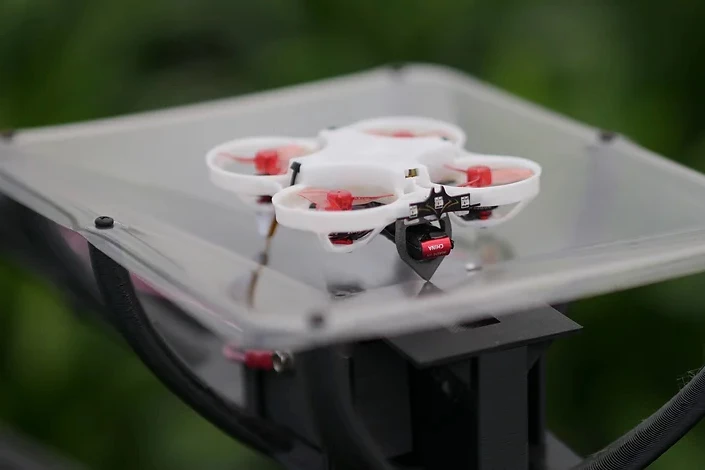Just like their field-dwelling counterparts, plants grown in greenhouses are preyed upon by flying insects. The Dutch-designed PATS system is designed to help, by sending tiny drones to chop those insects up in mid-air.
PATS, which is manufactured by a Delft University of Technology spinoff company of the same name, is actually made up of two parts: PATS-C and PATS-X.
The PATS-C component consists of internet-connected infrared camera modules which are installed throughout the greenhouse. Utilizing AI-based algorithms, these units detect and identify any flying insects that enter the airspace above the plants. Species identification is based on wingbeat frequency and size.
If the insect turns out to be a beneficial species, such as a bee, it's left alone. If it's a pest, however … well, that's where PATS-X comes in.
PATS-X consists of one or more small quadcopter drones that sit on a wireless charging dock in the greenhouse while not in use. When a pest is spotted, PATS-C activates the drone and guides it to the insect's location. The copter then simply flies right into the pest – chopping it up in its propellers – after which it returns to its pad.

A basic version of PATS-C is actually already utilized in approximately 250 greenhouses throughout Europe. Clients are kept informed of insect populations within their facilities via an online dashboard. PATS-X is currently being trialled, and should reach its first customers by the end of this year.
In an interesting twist, a recent study led by PATS biologist Dayo Jansen found that the drones' motors produce ultrasound in the same range as that of bat vocalizations. For this reason, some species of pest moths actively evade the noise by heading to the ground.
Jansen is now working this factor into the drone-control algorithms, anticipating the moths' evasive actions as the drone approaches. Additionally, however, it's conceivable that PATS users could play such sounds through speakers in their greenhouses, keeping moths from flying over their plants in the first place.
"With my research we aim to dive deep into some of the most common and harmful species in the European greenhouses and make sure our systems are ready for a tailored approach against them," said Jansen.
And should you be wondering, he informed us that "PATS" is the Dutch description of the sound made when a mosquito is swatted between both hands.
Sources: PATS, Society for Experimental Biology via EurekAlert




